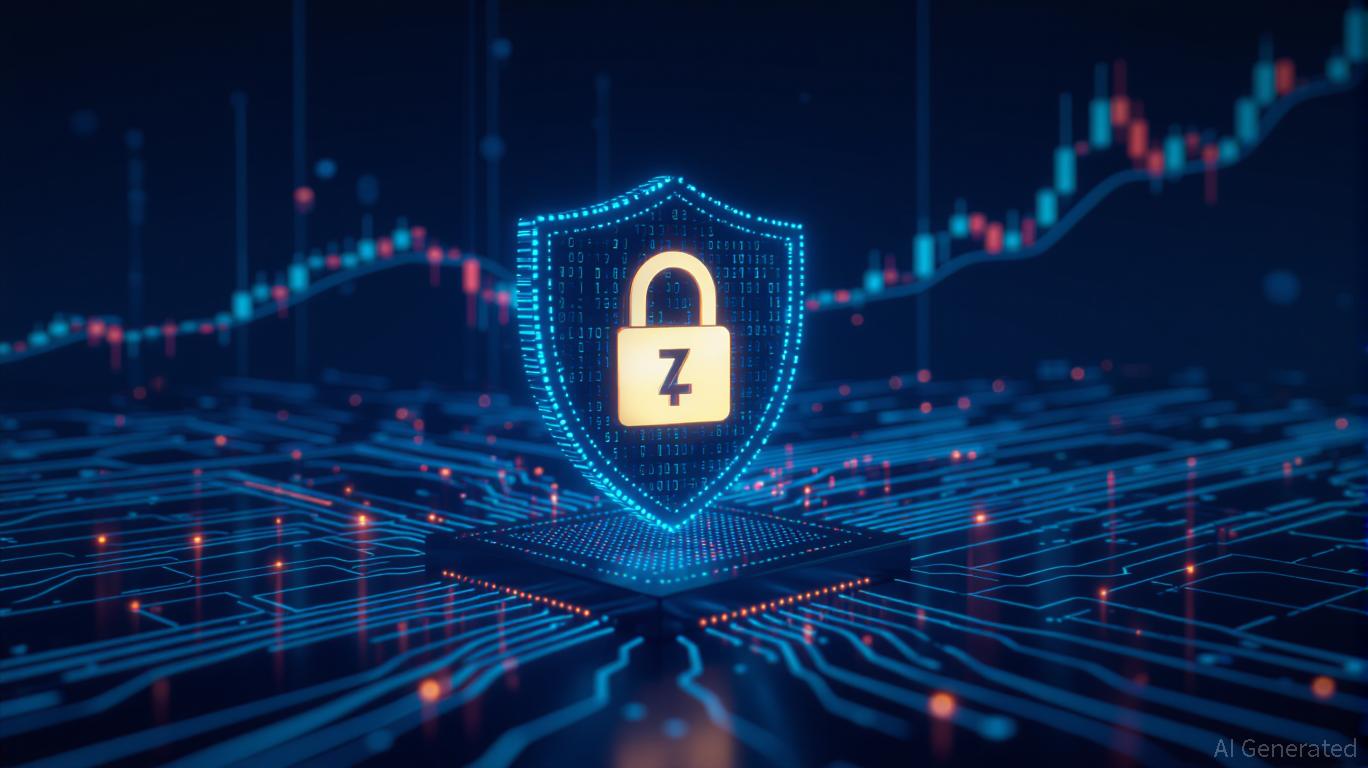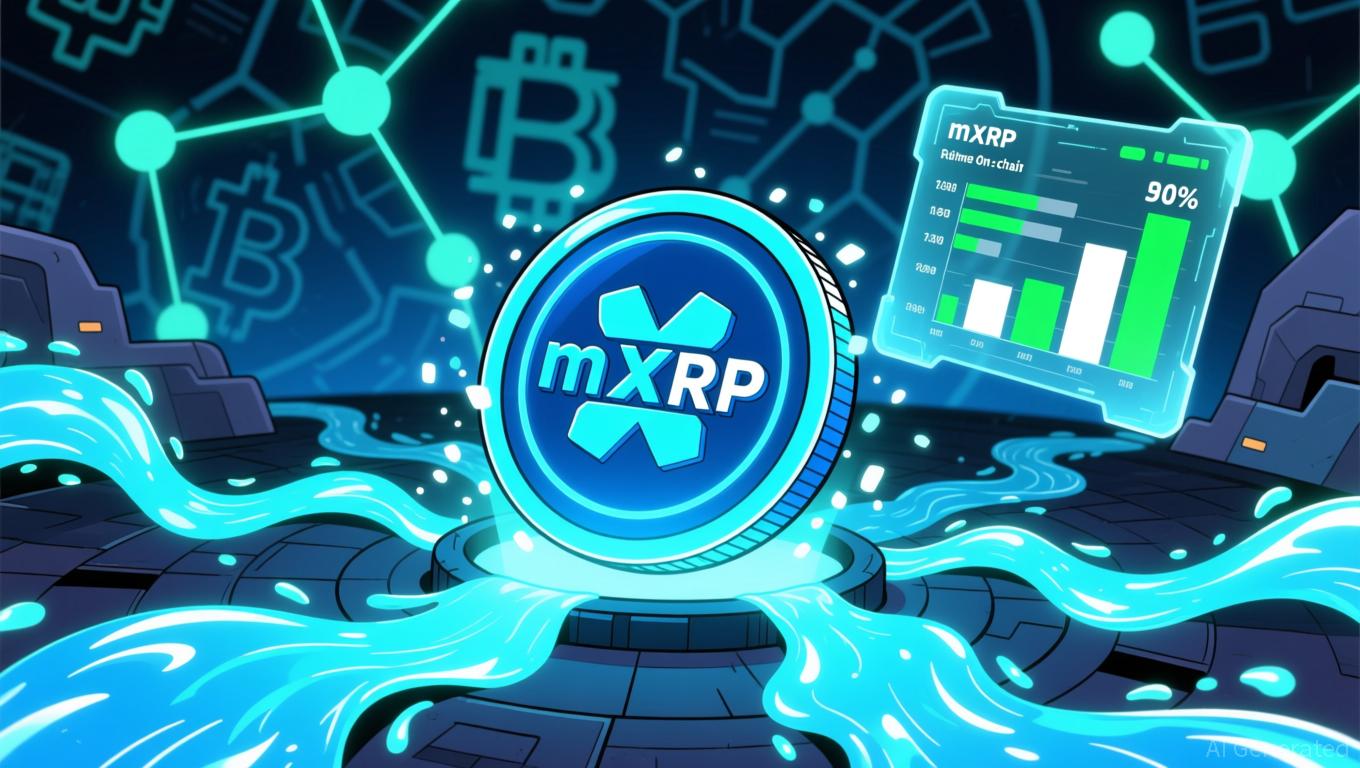ZK-Related Cryptocurrencies See Significant Gains: What Factors Are Fueling the Latest Rally?
- ZK crypto sector surged in 2025, with Zcash (ZEC) rising 300% and hitting $7B market cap, driven by on-chain innovation and institutional adoption. - zkSync and StarkNet's scalability upgrades (43k TPS, $72M TVL) addressed Ethereum bottlenecks, while Zcash's hybrid privacy model attracted institutional investors. - Deutsche Bank , Sony , and UBS integrated ZK solutions for compliance and asset tokenization, supported by EU MiCA and U.S. SEC regulatory frameworks. - ZK-rollups projected to handle 60% of E
On-Chain Innovation: Powering Expansion
Zero-knowledge proofs (ZKPs) have moved from academic theory to essential components for blockchain scalability and privacy. In 2025, Layer 2 (L2) networks such as zkSync, StarkNet, and Polygon have rolled out major upgrades. For example, zkSync’s Atlas upgrade reached 43,000 transactions per second (TPS) with almost zero transaction fees, while StarkNet’s Grinta upgrade implemented a multi-sequencer system, tripling its total value locked (TVL) to $72 million in Q3, as reported by
Zcash, on the other hand, has used its flexible privacy features to draw in institutional capital. The Electric Coin Company (ECC) released a Q4 2025 roadmap prioritizing privacy upgrades and better usability for the Zashi wallet, according to the
Coinotag report . By letting users switch between shielded and transparent transactions, Zcash has become a hybrid option that bridges privacy coins and enterprise solutions.
Institutional Adoption: From Finance to Blockchain
The institutional shift toward ZK protocols is now a reality. Leading organizations like Deutsche Bank, Sony, and Anchorage Digital have adopted ZK-based technologies in their systems. Deutsche Bank’s
Enterprise applications are just as significant. In Q1 2025, ZKsync became the second-largest blockchain for real-world assets (RWAs), with UBS piloting tokenized gold and Tradable onboarding $1.7 billion in private credit, according to a
Messari report . These initiatives demonstrate how ZKPs can tokenize traditional assets while maintaining privacy—an essential feature for institutional adoption.Regulatory Support and Enterprise Applications
Clearer regulations have further boosted adoption. The EU’s Markets in Crypto-Assets (MiCA) and new U.S. SEC rules for asset tokens now specifically endorse ZKPs for compliance, highlighting their value in creating tamper-proof audit trails, as detailed in an
Ancilartech Medium post . This regulatory alignment has made ZK protocols appealing to businesses seeking both innovation and compliance.In areas like supply chain management and identity verification, ZKPs are proving revolutionary. Companies can now confirm product authenticity without revealing sensitive business data, as shown in a
Meegle case study , while decentralized identity platforms let users prove their identity without exposing private details, as explained in a Quicknode guide . These solutions are already being put to use in industries such as finance and logistics.Looking Forward: Web3 Powered by ZK
Projections indicate that by 2026, ZK-rollups will process more than 60% of Ethereum’s L2 transactions, thanks to their speed and cost benefits, according to a
Markets FinancialContent article . Over the long term, ZKPs are expected to form the backbone of confidential smart contracts, decentralized identity, and cross-chain communication. As Vitalik Buterin and Edward Snowden have pointed out, ZKPs represent more than just a technical improvement—they signal a fundamental shift toward more secure, private, and scalable blockchains, as discussed in the Markets FinancialContent article .For investors, the message is unmistakable: ZK-focused cryptocurrencies have moved beyond experimental status. They are now the cornerstone of the next wave of crypto growth, backed by institutional support, favorable regulation, and practical use cases.
Conclusion
The rapid ascent of ZK-related digital assets is the result of both technological progress and institutional demand. From Zcash’s emphasis on privacy to zkSync’s advances in scalability, the industry is being driven by solutions that tackle both privacy and performance. As more enterprises and regulators recognize the promise of ZK technology, this trend is set to continue—and likely accelerate—into 2026. For investors, the real question is no longer if ZK is worth considering, but how to best position themselves for its coming dominance.
Disclaimer: The content of this article solely reflects the author's opinion and does not represent the platform in any capacity. This article is not intended to serve as a reference for making investment decisions.
You may also like
Solana's Latest Downturn: Systemic Threats Facing High-Speed Blockchain Platforms
- Solana's $SOL token faces underperformance despite 70M daily transactions and $143B DEX volume, exposing systemic risks in high-throughput blockchain ecosystems. - A $258M whale position liquidation highlights leveraged trading fragility, with cascading losses threatening DeFi protocols and validator staking pools. - Validator reliance on volatile MEV rewards (7% of Figment's delegator income) risks centralization and reward instability amid regulatory uncertainty. - Infrastructure upgrades like UAE vali

As Technology Stocks Plunge Further, the Federal Reserve's Reputation in Handling Crises Is Put to the Test
- U.S. tech stocks face selloff as inflation fears and Fed policy uncertainty drive Nasdaq and S&P 500 declines, with "Magnificent Seven" valuations exceeding 35 P/E ratios. - Apple delays iPhone Air launch due to weak sales, exposing broader consumer demand challenges and compounding market concerns over tech overvaluation. - Monday.com's 20% premarket drop highlights risks as strong Q3 results fail to offset cautious guidance, mirroring sector-wide profit-taking pressures. - Fed's mixed signals on rate c

XRP News Today: XRP’s DeFi Bridge Under Scrutiny: Institutional Investments and Whale Holdings Clash with Market Uncertainty
- XRP surges near $2.50 amid institutional interest and DeFi growth, with $2.55 as a critical liquidity threshold. - mXRP's launch on BNB Chain enables yield generation for XRP holders, leveraging Fireblocks/Fordefi custodial tech. - Whale accumulation boosts XRP's 13.43% controlled supply, contrasting weak retail demand and $245M XRP ETF inflows. - Ripple's $500M funding round and Mastercard/Gemini partnership strengthen XRP's traditional finance integration. - Market volatility persists as broader crypto

Bitcoin Experiences Unexpected Volatility Due to Macroeconomic Changes: Is This a Chance to Buy or a Cautionary Signal for Cryptocurrency Investors?
- Bitcoin's 2025 volatility stems from rate cuts, U.S.-China trade war escalation, and Binance's $20B stablecoin collapse, triggering an 18% sell-off. - Michael Saylor predicts $150,000 by late 2025 via institutional adoption, while structural risks like 84,806 long-term holder sales and Fed policy shifts challenge this outlook. - Leverage-driven ecosystems amplify downturns, with margin calls and liquidations creating self-reinforcing price declines after USDe's de-peg. - Investors face a dilemma: long-te
